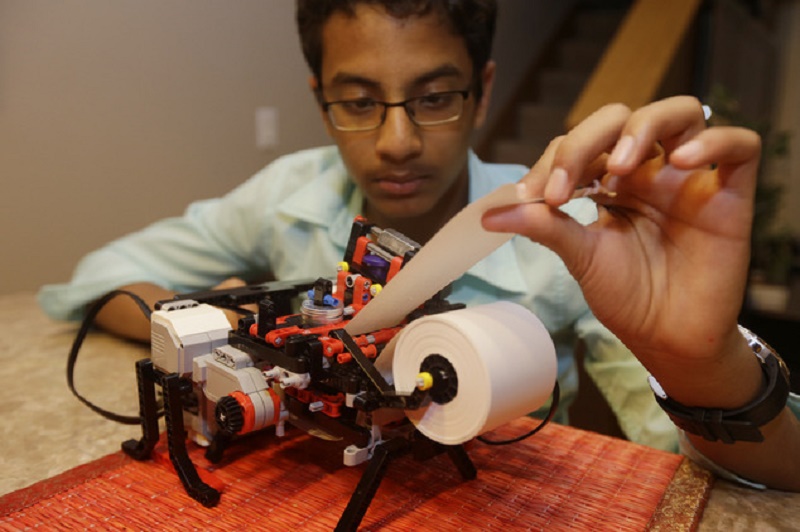
A California eighth-grader is using his God-given talents in an incredible way, recently launching a company to develop low-cost machines to print Braille, the writing system for the visually impaired.
Last year, 12-year-old Shubham Banerje invented his product for a school science fair project after asking his parents, "How do blind people read?"
They responded, "Google it."
After doing some online research, Shubham, now 13, was surprised to discover that Braille printers, also called embossers, cost at least $2,000 .
'I just thought that price should not be there. I know that there is a simpler way to do this,' Shubham, who lives in a suburb of the the entrepreneurial capital Silicon Valley, told the Daily Mail.
The teen decided to use his LEGO MINDSTORMS EV3 set, modifying a robot model to make a functional printer at a fraction of the cost of other machines on the market.
"I feel really bad for the visually impaired. I hope to do more actually. I hope to make more, helping the people around," said Shubham.
Today, the teen's company, Braigo Labs--which he started with an initial 35,000 investment from his dad--has already received an investment from tech giant Intel Cop, making the 8th grader the youngest entrepreneur to ever receive venture capital funding
Shubham has used the money to build a more sophisticated version of his Lego-based printer using an off-the-shelf desktop printer and a newly released Intel computer chip. He has also hired professional engineers and advisers to help design and build Braille printers based on his original ideas.
'My end goal would probably be having most of the blind people . . . using my Braille printer,' Subham explained.
Soon, he hopes to develop a desktop Braille printer that costs around $350 and weighs just a few pounds, compared with current models that can weigh more than 20 pounds. The printer could also be used to print Braille reading materials on paper, using raised dots instead of ink, from a personal computer.
The company's goal is to have a prototype ready for blind organizations to test this summer and have a Braigo printer on the market later this year.
'He's solving a real problem, and he wants to go off and disrupt an existing industry. And that's really what it's all about,' said Edward Ross, director of Inventor Platforms at Intel.
Lisamaria Martinez, community services director at the San Francisco Lighthouse for the Blind, said the cheaper printer would allow members of the blind community to print out letters, household labels, shopping lists and short reading materials.
'I love the fact that a young person is thinking about a community that is often not thought about,' said Martinez, who is visually impaired.














